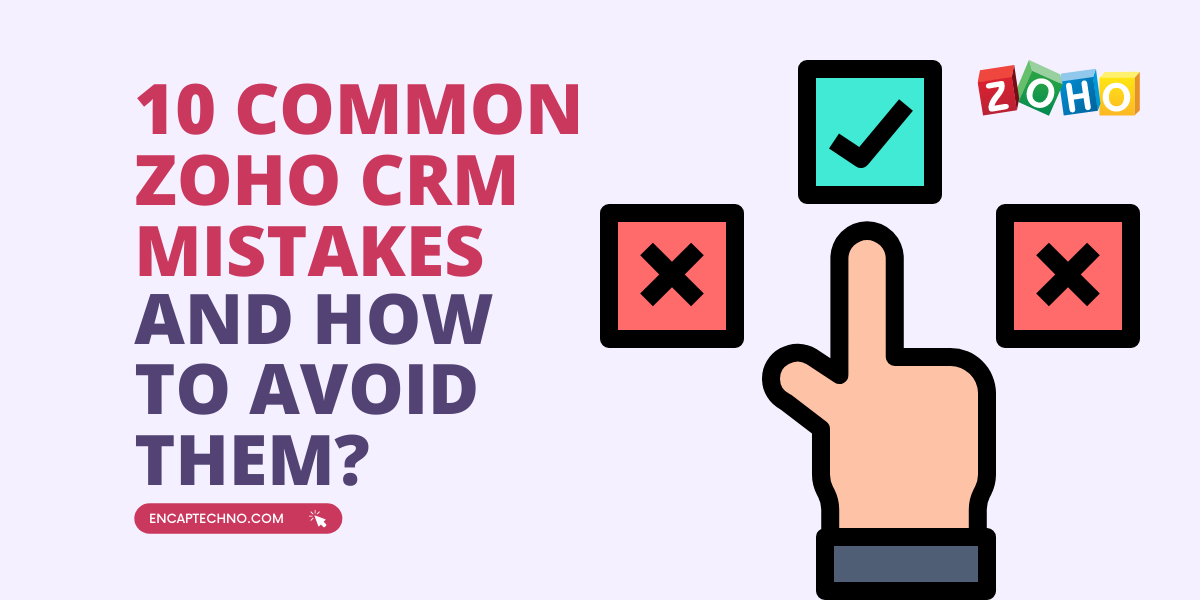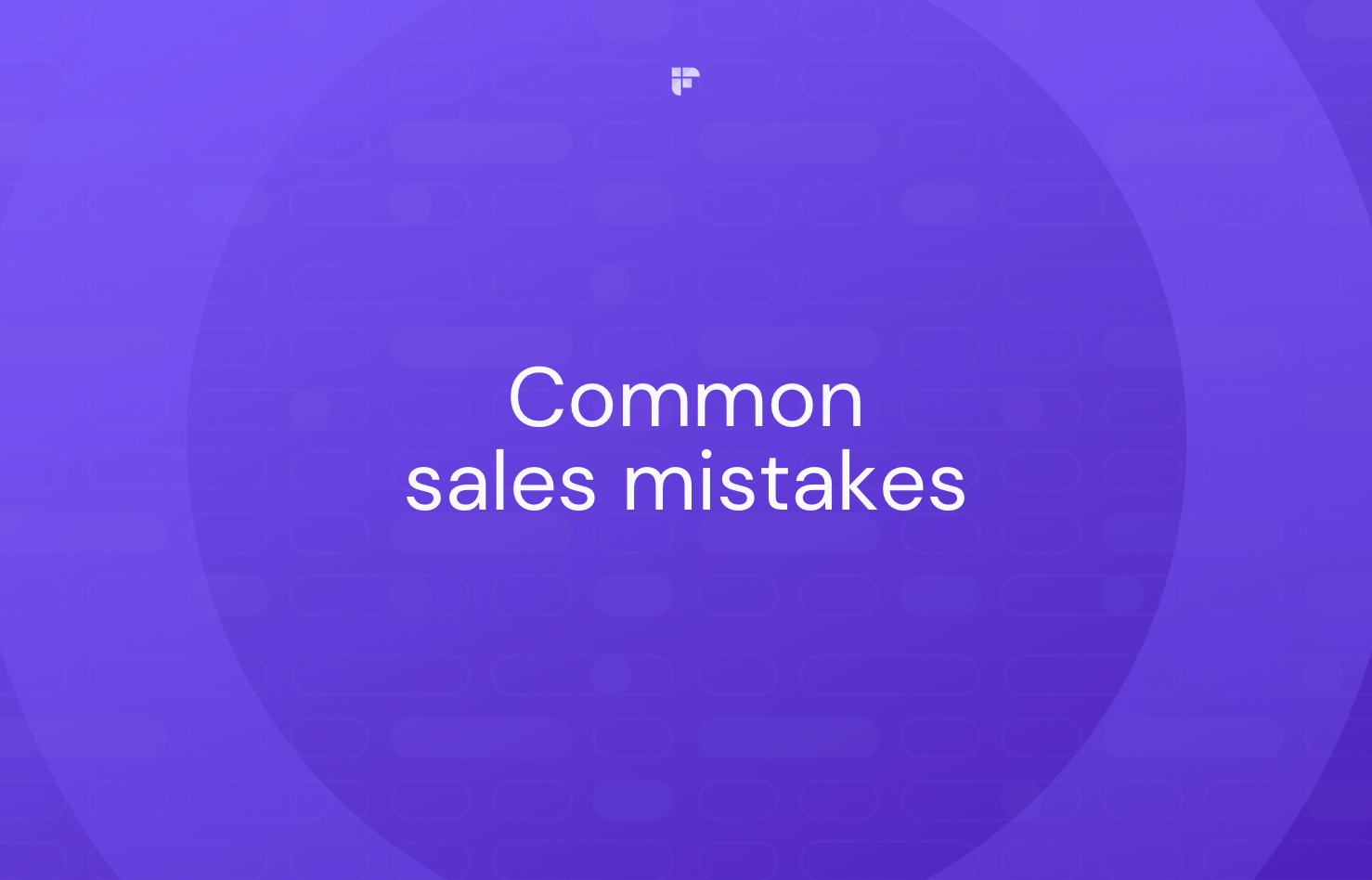Avoiding common sales pipeline management mistakes can significantly improve your sales process. By understanding and addressing these errors, you can enhance the efficiency and effectiveness of your sales pipeline.

Credit: stoica.co
Mistake 1: Lack Of A Clear Sales Pipeline Structure
In order to effectively manage a sales pipeline, it is crucial to have a clear and well-defined structure in place. Without a solid sales pipeline structure, your sales team may struggle to track leads, identify bottlenecks, and close deals efficiently. Let’s explore the importance of a sales pipeline structure, the key components of an effective structure, and best practices for establishing one.
Importance Of A Sales Pipeline Structure
- Ensures a systematic approach to sales: A clear sales pipeline structure provides a step-by-step framework for moving prospects through the sales process. This systematic approach allows your team to understand where each lead stands and the actions needed to move them closer to closing the deal.
- Enhances visibility: With a well-structured pipeline, you gain visibility into the health of your sales process. You can easily track the number of leads at different stages, identify potential roadblocks, and make data-driven decisions to optimize your sales efforts.
- Improves forecasting accuracy: A defined structure enables you to accurately forecast future revenue by analyzing the historical performance of each stage in the pipeline. This helps you set realistic sales targets and allocate resources effectively.
Key Components Of An Effective Sales Pipeline Structure
An effective sales pipeline structure consists of several key components that work together to guide your team through the sales process in a logical and organized manner. These components include:
- Lead Qualification: Clearly define the criteria for qualifying leads and ensure that only qualified leads enter the pipeline. This helps your team focus their efforts on leads with the most potential for conversion.
- Stages: Break down your sales process into distinct stages that represent different milestones in the buyer’s journey. Each stage should have specific actions and objectives associated with it, enabling your team to understand the necessary steps to move a lead from one stage to the next.
- Metrics and KPIs: Establish relevant metrics and key performance indicators (KPIs) for each stage of the pipeline. These metrics help you measure the health of your pipeline, identify areas for improvement, and track the progress of individual leads.
- Automation and CRM Integration: Utilize sales automation tools and integrate them with your customer relationship management (CRM) system to streamline the sales process. This ensures that leads are appropriately tracked, data is effectively managed, and tasks are automated for increased efficiency.
Best Practices For Establishing A Clear Sales Pipeline Structure
- Involve your sales team: When designing your pipeline structure, involve your sales team to gather insights and understand their needs. This collaborative approach ensures that the pipeline aligns with your team’s workflow and encourages adoption.
- Simplify and standardize your stages: Keep your pipeline stages simple and easily understandable by everyone on your team. Avoid having too many stages or complex terminology that can confuse and delay the sales process.
- Regularly review and refine: Continuously assess the effectiveness of your sales pipeline structure and make necessary adjustments based on your team’s feedback and performance data. Regular reviews help you identify areas of improvement and adapt to changing market dynamics.
- Provide training and support: Ensure that your sales team receives proper training on how to effectively navigate and utilize the sales pipeline structure. Offer ongoing support to address any questions or challenges they may face.

Credit: help.zoho.com
Mistake 2: Inaccurate Sales Forecasting
Sales forecasting plays a crucial role in the success of any business, as it helps to predict future revenue and make informed decisions. However, inaccuracies in sales forecasting can have significant consequences for the overall sales pipeline management. In this article, we will explore the impact of inaccurate sales forecasting, common causes behind it, and steps you can take to improve the accuracy of your sales forecasting.
The Impact Of Inaccurate Sales Forecasting
Inaccurate sales forecasting can have far-reaching effects on your business. Here are some of the key impacts:
- Missed revenue targets: The primary purpose of sales forecasting is to set realistic revenue targets. If your forecasts are inaccurate, you may set targets that are too high or too low, leading to missed revenue opportunities or lackluster performance.
- Operational inefficiencies: Accurate sales forecasting helps in planning resources effectively. Inaccurate forecasts can result in overstaffing or understaffing, leading to inefficiencies and increased costs.
- Poor decision making: Sales forecasts provide critical insights for decision-making at various levels of your organization. Inaccurate forecasts can misguide decision-makers, resulting in poor strategic choices regarding pricing, marketing campaigns, and resource allocation.
Common Causes Of Inaccurate Sales Forecasting
In order to improve sales forecasting accuracy, it’s important to understand the common causes behind inaccuracies. Some of the common causes include:
- Lack of data: Inaccurate forecasting can occur when there is a lack of reliable historical data or when data is not properly captured and organized.
- Incorrect assumptions: Sales forecasts heavily rely on assumptions about market demand, customer behavior, and competitive landscape. If these assumptions are flawed or outdated, it can lead to inaccurate forecasts.
- Insufficient collaboration: Lack of collaboration between sales, marketing, and finance teams can result in inaccurate forecasts. Each department brings unique insights and perspectives that contribute to more accurate sales forecasting.
Steps To Improve Sales Forecasting Accuracy
Improving sales forecasting accuracy requires a systematic approach and attention to detail. Here are some steps you can take:
- Use reliable data: Ensure that you have access to accurate and up-to-date sales data. Invest in a CRM system that captures and tracks sales activities, customer interactions, and conversion rates.
- Refine your assumptions: Regularly review and update your assumptions about market trends, customer preferences, and competitive forces. Consider conducting market research and gathering customer feedback to validate your assumptions.
- Promote collaboration: Encourage collaboration between sales, marketing, and finance teams. Foster an environment where ideas and insights are shared freely, and each department’s input is valued in the forecasting process.
- Implement regular reviews: Set up a system for regular review and refinement of your sales forecasts. Monitor actual sales performance against forecasted numbers and make adjustments as necessary.
- Train and educate: Provide training and education to your sales team on effective sales forecasting techniques. Ensure they understand the importance of accurate forecasting and how it impacts their daily activities.
Mistake 3: Poor Lead Qualification
Mistake 3: Poor Lead Qualification – Learn how to avoid the common sales pipeline management mistake of not properly qualifying leads, and discover strategies to improve your sales process for better results.
The Importance Of Lead Qualification
Lead qualification serves as the foundation of an effective sales pipeline. Identifying potential customers who not only have an interest but also the capability to purchase your product or service is crucial for driving revenue growth. Without proper lead qualification, your sales team can waste precious time and resources pursuing unqualified leads, resulting in low conversion rates and missed sales opportunities.
Signs Of Poor Lead Qualification
Identifying the signs of poor lead qualification is essential for optimizing your sales pipeline. These signs can help you understand whether you are targeting the right audience or wasting effort on unqualified leads. Here are some indicators that you may be experiencing poor lead qualification:
- Low conversion rates: If you find that a large percentage of your leads are not converting into customers, it could be a sign of poor lead qualification.
- Low-quality leads: When your sales team receives leads that are not a good fit for your product or service, it indicates a lack of effective lead qualification.
- High churn rates: If you notice a high number of customers leaving shortly after making a purchase, it could be because the leads were not properly qualified, resulting in mismatched expectations.
Strategies For Effective Lead Qualification
To avoid the pitfalls of poor lead qualification, consider implementing these strategies to ensure you are attracting and nurturing high-quality leads:
- Create buyer personas: Develop detailed profiles of your ideal customers based on their demographics, behaviors, and pain points. This will help you effectively target your marketing efforts and qualify leads more accurately.
- Implement lead scoring systems: Assign a score to each lead based on their engagement level, demographic information, and fit with your ideal customer profile. This will help you prioritize leads and focus on those with the highest potential.
- Qualify leads through effective communication: Engage in meaningful conversations with your leads to understand their needs, challenges, and purchasing timeline. This will enable you to determine their level of interest and qualification.
- Collaborate with marketing and sales teams: Align your marketing and sales efforts to ensure consistent messaging and qualification criteria. Regularly communicate and exchange feedback to enhance lead qualification and improve the overall sales process.
- Continuously analyze and optimize: Monitor the success of your lead qualification efforts through metrics like conversion rates and customer feedback. Identify areas for improvement and apply necessary adjustments to refine your lead qualification process.
By focusing on effective lead qualification, you can streamline your sales pipeline, increase conversion rates, and maximize revenue growth. Implement these strategies to avoid the common mistake of poor lead qualification and set your sales team up for success.
Mistake 4: Inadequate Sales Team Training
One common mistake in sales pipeline management is inadequate training for the sales team. Avoid this by providing comprehensive training programs that equip your team with the skills and knowledge they need to succeed in closing deals.
The Impact Of Inadequate Sales Team Training
Inadequate sales team training can have a significant negative impact on the performance of your sales pipeline. Without proper training, your sales team may lack the skills and knowledge necessary to effectively engage with potential customers, qualify leads, and close deals. This can result in missed opportunities, lost revenue, and reduced overall sales performance.
Key Areas Of Sales Team Training
When it comes to sales team training, there are several key areas that should be covered to ensure success:
- Sales process and techniques: Understanding the sales process and having a grasp of effective sales techniques is crucial for sales team members. They must be familiar with each stage of the sales cycle and know how to navigate through it.
- Product and market knowledge: To effectively sell a product or service, sales team members must have a deep understanding of what they are selling and the industry in which they operate. This includes knowledge of the features, benefits, and unique selling points of the product, as well as insights into the market landscape and competition.
- Communication and relationship building: Sales is all about building relationships and effectively communicating with potential customers. Sales team members need to be trained in communication skills, active listening, asking the right questions, and understanding customer needs to establish trust and rapport.
In addition to these key areas, sales team training should also focus on objection handling, negotiation skills, time management, and the effective use of sales tools and technology.
Methods To Improve Sales Team Training Effectiveness
To ensure that your sales team training is effective and impactful, consider these methods:
- Customize training programs: Tailor your training programs to the specific needs and goals of your sales team. Acknowledge their existing knowledge and skills and focus on areas that require improvement.
- Provide ongoing training: Sales team training should not be a one-time event. Continuous learning and development are essential for sales success. Offer regular training sessions, workshops, and resources to keep your team up-to-date with the latest techniques and industry trends.
- Role-play and practice: Encourage your sales team to practice their skills through role-playing exercises. This allows them to gain confidence, identify areas for improvement, and refine their sales approach in a safe and supportive environment.
- Measure and track progress: Implement sales performance metrics and analytics to measure the effectiveness of your training programs. Regularly track the progress of individual team members and provide constructive feedback to help them improve.
- Invest in sales training tools and technology: Leverage technology to enhance your training efforts. Use sales enablement tools, online learning platforms, and video tutorials to provide engaging and interactive training experiences.
By addressing the mistake of inadequate sales team training and implementing these methods, you can ensure that your sales team is equipped with the knowledge and skills necessary to drive success in your sales pipeline.
Mistake 5: Neglecting Relationship Building
Building strong relationships with prospects and clients is an essential aspect of successful sales pipeline management. Neglecting this crucial step can result in missed opportunities, lost deals, and damaged reputations. In this section, we will explore the importance of building relationships in sales, common pitfalls to avoid, and tips for effectively fostering relationships with prospects and clients.
The Importance Of Building Relationships In Sales
Establishing and maintaining relationships with prospects and clients is vital for sales success. When you focus on building strong relationships, you develop trust, rapport, and loyalty, which can result in repeat business, referrals, and long-term customer partnerships. By prioritizing relationship building, you create a solid foundation for future sales growth.
Common Pitfalls In Relationship Building
While relationship building is critical, there are common mistakes to avoid:
- Focusing solely on transactions: Treating every interaction as a transaction rather than investing time and effort in building authentic connections can lead to missed opportunities to establish trust and rapport.
- Not actively listening: Neglecting to actively listen to your prospects and clients can hinder your understanding of their needs and desires, hindering the development of strong relationships.
- Ignoring follow-ups: Failing to follow up promptly and consistently can convey a lack of interest and commitment, undermining the relationship-building process.
- Being too sales-focused: Constantly pushing sales pitches without considering the individual needs and concerns of your prospects and clients can alienate them and impede relationship development.
- Lacking personalization: Failing to personalize your communication and interactions can make prospects and clients feel like just another number, weakening the potential for meaningful relationships.
Tips For Effective Relationship Building With Prospects And Clients
To ensure successful relationship building with your prospects and clients, consider implementing the following tips:
- Show genuine interest: Take the time to understand and empathize with your prospects and clients, remembering that they are individuals with unique needs and desires.
- Be an active listener: Engage in active listening techniques, such as summarizing and asking clarifying questions, to demonstrate your attentiveness and understanding.
- Follow up consistently: Regularly reach out to your prospects and clients to provide updates, answer questions, and express genuine care for their success.
- Focus on solutions: Address the unique challenges and pain points of your prospects and clients by presenting tailored solutions rather than generic sales pitches.
- Personalize your approach: Tailor your communication and interactions to resonate with each prospect or client, prioritizing their individual preferences and needs.
By prioritizing relationship building and implementing these effective strategies, you can foster strong connections with your prospects and clients, leading to increased sales, client satisfaction, and long-lasting partnerships.

Credit: www.usergems.com
Frequently Asked Questions For 5 Common Sales Pipeline Management Mistakes (and How To Avoid Them)
What Are The Most Common Mistakes In Sales Pipeline Management?
When it comes to sales pipeline management, some common mistakes include not regularly updating the pipeline, failing to prioritize leads effectively, and not properly tracking and analyzing sales data. Avoiding these mistakes can help improve your sales performance and overall effectiveness.
How Can You Avoid The Mistake Of Not Updating Your Sales Pipeline Regularly?
To avoid the mistake of not updating your sales pipeline regularly, make it a habit to review and update your pipeline on a daily or weekly basis. Use your CRM software to track and record all interactions and progress with leads, ensuring that your pipeline is always up to date and providing you with accurate information to make informed decisions.
What Can You Do To Prioritize Leads Effectively In Your Sales Pipeline?
Effectively prioritizing leads in your sales pipeline requires understanding the potential value of each lead and their readiness to make a purchase. Implement lead scoring systems and qualification criteria to determine which leads are most likely to convert and give them higher priority.
By focusing your efforts on the most qualified leads, you can maximize your conversion rate and overall sales performance.
Conclusion
In order to effectively manage your sales pipeline and maximize your chances of success, it is crucial to avoid common mistakes that can hinder your progress. By understanding and addressing these challenges, such as poor planning, lack of customer focus, inadequate tracking and analysis, overreliance on technology, and neglecting to adapt to changes, you can enhance your sales process and achieve your goals.
By implementing the strategies and tips highlighted in this blog post, you’ll be well-equipped to navigate your sales pipeline with confidence and achieve consistent sales growth.



